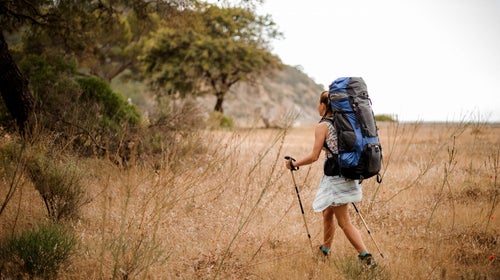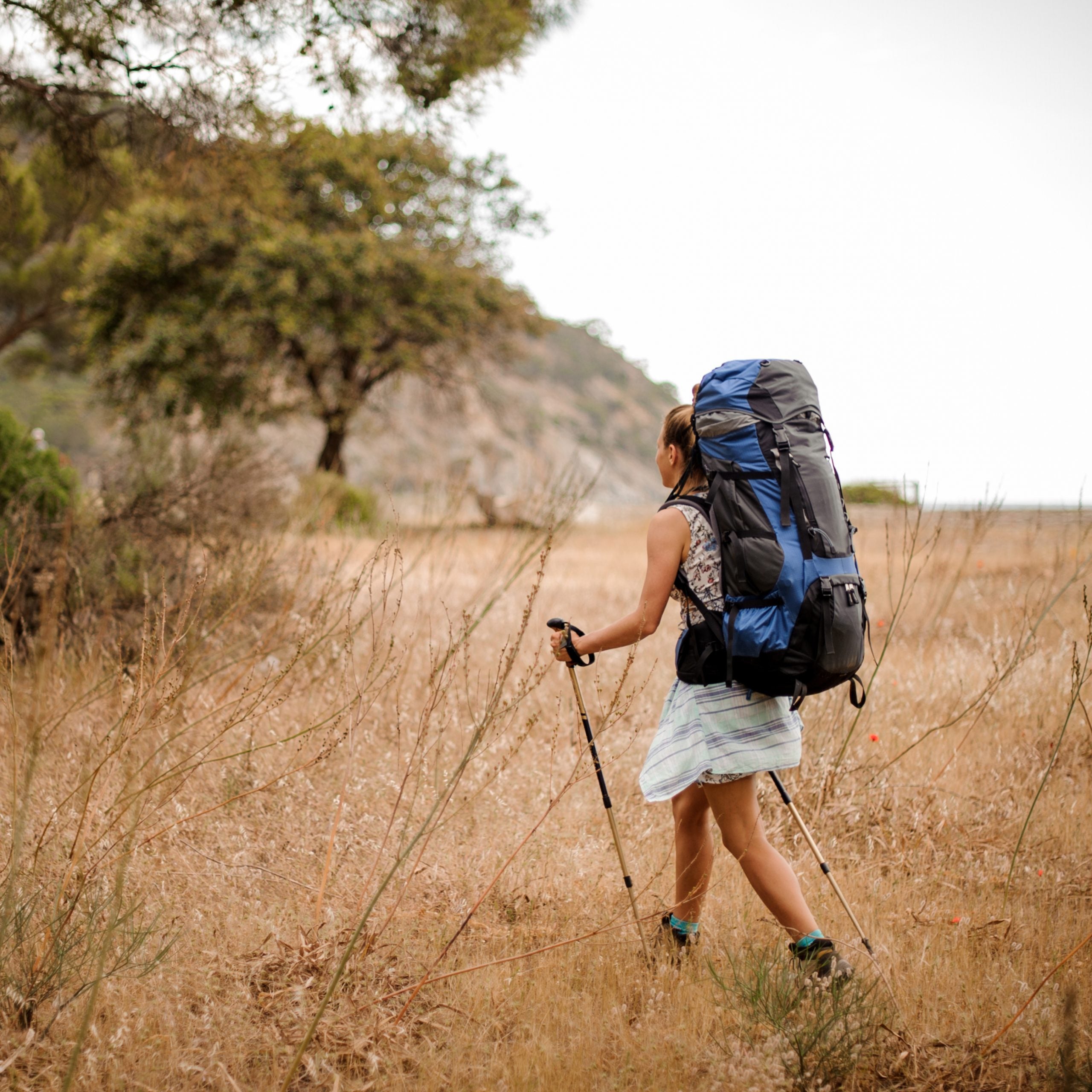What exactly constitutes an adventure dress?╠řIn short, itÔÇÖs a technical, comfy one-piece that gets you ready for alpine starts and out of the house without a second thought. Outfitters like Columbia and Patagonia have long made casual frocks meant for traveling or lounging at camp. But more and more brandsÔÇöincluding╠řAthena Outdoors,╠ř,╠ř,╠řand╠řÔÇöare focusing on high-performance dresses, skirts, and even╠ř. Companies such as have further expanded the market with down skirts for cold climates. Those designed for running and biking often feature built-in shorts, but options without those are perfectly suitable for (and in some cases better for) hiking and other low-intensity activities.
IÔÇÖm on board. The humble adventure dress has been my best friend while trekking through rain-drenched mountains in New Zealand, tracing the rocky coast of southwestern Crete, and many places in between. (IÔÇÖve worn thin my Columbia╠ř.) However, I know IÔÇÖm not necessarily in the majority here. I have friendsÔÇö║┌┴¤│ď╣¤═° editors among themÔÇöwho balk at the thought, wondering:╠řWhy should we be expected to dress feminine even while weÔÇÖre outdoors?
ItÔÇÖs easy to understand why women might fear that wearing something as traditionally feminine as a dress could communicate that weÔÇÖre somehow lesserÔÇönot as strong or as skillful or as experienced. Debates still rage over whether female athletes should wear╠ř. Outdoorswomen in particular can be╠řpigeonholed as tomboys, a term that once referred to women who╠ř, such as working and voting. Sporty women have selected their position on the gender binary, weÔÇÖre told, and must double down to be taken seriously. Amid the cocksure bravado of the adventure-sports world, fluidity is read as weakness. Dresses are certainly not taken as seriously as traditional sporting attire, despite their objectively positive attributes, like breathability and mobility.
Dresses (and, to a lesser extent, skirts) are cool and breezy during the summer and an easy piece to╠řlayer when temperatures drop. TheyÔÇÖre excellent for the shoulder months and post-work hikes that turn into chilly after-dark missions. On a five-day road trip from New Mexico to California last summer, there was no question what I would wear. When my companions and I╠řpassed an enticing swimming hole in the high desert of northeastern Nevada, I slipped into bikini bottoms in the parking lot and back out of them again afterward. That evening, when we rolled into camp 4,000 feet higher, it was convenient to throw on leggings before even erecting my tent. With the addition of a puffy, I was plenty warm for nighttime walks around the nearby alpine lake.
Supremely convertible, dresses are ideal for a wide range of outdoor activities when traveling with a limited wardrobe. Generally, I donÔÇÖt care about looking presentable while IÔÇÖm exploring. But itÔÇÖs an undeniably convenient garment for transitioning from sweaty, mussed clothes into a restaurant-ready getup with a choice accessory or two that IÔÇÖve stashed in a car or backpack.
While sailing through Polynesia, for example, I found out the hard way that Tahitians tend to exhibit a lack of regard for traditional opening hours. One day╠řwhile anchored in Haamene, a hurricane hole off╠řthe island of Tahaa, the only food available╠řwas at an upscale French restaurant. I was grateful to have worn a quick-drying dress that looked decent, wet though it was from the ocean spray of motoring ashore in a dinghy. (My male companions were, predictably, sporting╠řthe sole outfits they wear on most occasions.)
IÔÇÖm especially keen on dresses for air travel. Case in point: when boarding a plane in Bangkok to head back to the States after a month spent hiking through Thai jungles and kayaking past karst formations in Vietnam (my dress was perfectly suited for each of those activities, too), I couldnÔÇÖt bring myself to don pants in the stifling humidity, even though I knew I would freeze as soon as the A/C blasted on. Fortunately, I always squirrel away a pair of leggings in my carry-on for when the cabin gets cold.
There are myriad other reasons to embrace the adventure dress. It covers your backside when you need to pee in the desertÔÇöevery female hiker knows what itÔÇÖs like to try to time a bathroom break before someone rounds the bendÔÇöand it protects you from the sun while your swimsuit dries out. Although few things are more pleasurable than basking on granite slabs after a polar plunge in the High Sierra, the dapples on my shoulders from years of sun exposure indicate that I should do otherwise. A sleeved, moisture-wicking dress is the easiest thing to toss on over a damp suit.
This is all to say that dresses have serious pragmatic advantages for the adventurous outdoorswoman, not least of which is peace of mind. ThereÔÇÖs no fussing about mismatching a printed shirt with those trendy color-blocked leggings as you sprint out the door. Dresses streamline the decision-making process, one and done, and ready you for just about anything life could throw at you.
Then again, this may be what IÔÇÖm trying to convince myself. Perhaps, ultimately, it just feels safer to wear a dress trailside than running shorts that inevitably ride up and expose my fleshy thighs. Being a female athlete is confusing. Women walk a tightrope of expectations located somewhere between whatÔÇÖs demanded of us and what we ourselves desire. Sometimes itÔÇÖs difficult to unknot my own choices from the reactions that are sure to be elicited by them.
Bucking entrenched gender norms comes with its own constraints. In that respect, tearing it up in an adventure dress is the best way to flip the bird at the status quo. Wherever you land on the gender spectrum, rocking a dress can be a freeing experience, and itÔÇÖs unfortunate that the stigma deters people from enjoying it. After all, immersing yourself in nature is a way to check social constructs at the trailhead. What you wear while doing so should enhance╠řthat experienceÔÇönot detract from it. I say╠řwear whatever the hell you want to.


